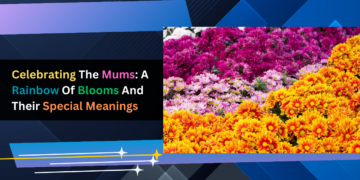Chrysanthemums, or simple ‘mums’, are one of the most popular autumn flowers. Every fall, gardens are teeming with life and handsome, and homes are filled with lovely reminders of old memories.
The numerous shapes and deep significance for which they serve find them in every collection-from festive arrangements to remembering gifts. With really many kinds, there’s a mum for every taste.
So, let’s enter into the marvellous world of Mums and discover why every flower has a unique value.
Exploring the Different Types of Mums in Nature
While the exact number of distinct types may vary based on systems of classification, we can very broadly define some of them into several commonly categorised groups, each with its unique charm.
It is common for people to see red or yellow mums; however, people do not know why they are different from each other.
1. Incurve Mums: These elegant flowers have petals that curl to the centre, often creating a ball or globular shape. They might be as little as small buttons or grow to a size that stops nearly everything in its tracks.
2. Reflex Mums: Unlike their namesake, reflex extensions have petals curving down as well as out, thus giving a full-open presentation.
3. Decorative Mums: These are rounded classic mums with a densely packed petal system that come in the widest range of colours and sizes and are used most popularly for regular arrangements.
4. Pompon Mums: Pompon mums are tiny and round, resembling world mini dahlia. Its tightly clasped flower petals make it look cheery and playful. It is very common to find pompon white mums.
5. Button Mums: Even smaller than pompons, these are tiny round blooms that bring a delicate touch to flowers and boutonnieres.
6. Spider Mums: Long, tubular petals splay out from the centre, reminiscent of spider legs. You can certainly add drama and intrigue to any arrangement with these unique mums.
7. Quill Mums: These are also similar to spider mums but have tube-like petals that are usually shorter and thicker.
8. Spoon Mums: These lovely mums have a spoon-shaped petal broader at the tip and tapering at the base.
9. Fimbriated Mums: These are considered “fringed” mums on account of the petals having finely divided, feathery edges that give a delicate and textured appearance.
10. Brush/Thistle Mums: These mums have a brush or thistle form in that they are tubular petals that grow in parallel.
11. Anemone Mums: They have a raised centre cushion surrounded by flat or slightly reflexed petals.
12. Rayonnant Mums: The long, straight petals of these mums radiate from the centre, creating a starburst effect.
13. Cascade Mums: These are, as the name suggests, long, trailing stems that cascade downward, suitable for hanging baskets and elevated displays.
Beyond form, the colour in a mum carries symbolic meaning. A white mum represents purity, innocence, and loyalty, whereas orange mums are used by people to convey warmth, excitement and enthusiasm.
Red mums are used by people when they want to signify love, passion, and admiration. You can show emotions of joy and friendship through yellow mums.
We also suggest using the Yourhomify website to learn more about mums.
Also Read: https://australianewsnetwork.com/














































